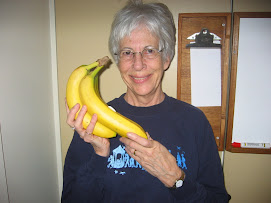This week has been rough, in a way, because we went to two gatherings to remember people who had died. One was for someone who had been Jerry's boss years ago. Paul was not religious, so his family decided on an open house at his home on a local pond, with no ceremony. We gathered, enjoyed the sunshine and view of the pond, ate, and in some cases reminisced about Paul.
The other was quite a contrast, a Catholic burial service for the son of a neighbor. We'd been to the viewing several weeks ago. Around here it's a tradition to wait for interment until the ground thaws, and obits explain through the winter that "spring burial" will take place at such-and-such a cemetery. So this was a spring burial, a very traditional one in the sense that the casket was brought to the decently-astroturfed hole. Someone placed two Yankees baseball caps on the casket (this broke tradition because we're all Red Sox fans around here), the priest led us in prayers, and Joe's mother placed a bouquet of 44 red roses, one for each year of his life, on the casket. I did okay until then, but was overcome for a bit. I can't help taking this kind of thing personally.
Afterward, we went to her house for food and sociability, and I found myself remembering a class on death and dying I took at the U. back when I was going to be a gerontologist. I did a term paper on the food served at Mormon funerals, and I developed a theory that you can tell the joyousness of the occasion by the height of the cake: wedding cakes have several tiers, birthday cakes a couple of layers, and the cakes that used to be served at LDS funerals were always sheet cakes.
Food is always a cultural marker. What you eat, when you eat it, what you say while you're eating it tells about the culture, especially when it's for a ritual occasion.
The food at both the gatherings, unlike the ceremony or lack of it, was similar: soft rolls with lobster salad, large-sized shrimps and tartar sauce, various kinds of coleslaw and potato salad, a platter of cheeses and meats to go with the artisan-style breads. And neither featured cake of any kind.
I have two conclusions from this, first that region trumps religion. The two ceremonial meals in NH resembled each other much more than either resembled what I remember of the Utah Mormon funeral feasts. Or is my Mormon information just out of date?
The second conclusion is that it is much easier for me to put on my anthropologist hat than to think too deeply or personally about these ceremonies.
Subscribe to:
Post Comments (Atom)

2 comments:
TRADITION! As Tevia explained it does show up in the rituals of a society . Mormon gatherings invariably feature baked ham, a potato dish that is made with sour cream ,cream of chicken soup,minced onion, cheddar cheese and topped with corn flakes.
There are a variety of salads tossed green, strawberry
jello with whipped cream,crusty hard rolls or fresh baked parker house rolls and various plates of brownies, cookies and some times a sheet cake This is usually served at the church after the service and when I was Relief Society President it seemed like we usually fed around 60 people. The Mormon culture is famous for green jello with carrots salad . I have never seen it at any Mormon gathering!
Food family and friends......they seem to go together .
I agree with the above comment. It is always "funeral potatoes" with the ham, crusty rolls, brownies,and cookies. I have never seen green jello at a gathering either. Lucie, I love your conclusion about cakes (the higher the cake...).
Post a Comment